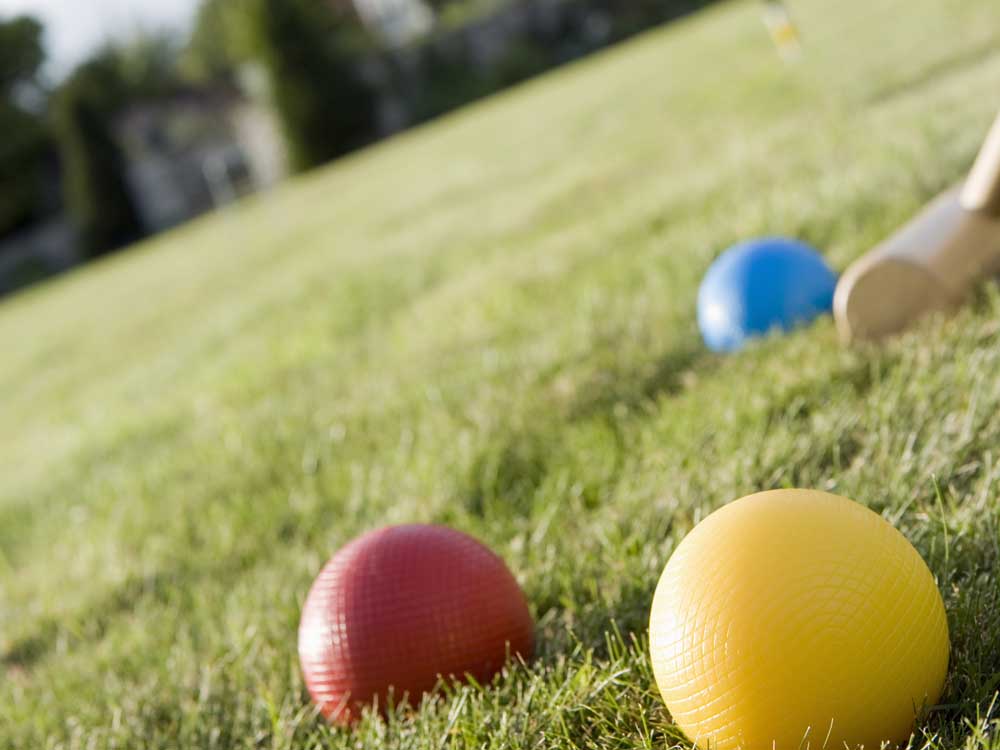Croquet, a fun set and match
Published 12:00 am Tuesday, June 14, 2016

- Thinkstock
For many, the game of croquet may conjure up visions of a well-mannered and civilized sport — stoic players in prim and proper dress, gingerly knocking their colorful balls around a manicured lawn, tapping them through wire wickets with wooden mallets. If you narrated this vision with a stuffy British accent, you’d nail this common misconception.
Serious tournament play of croquet is not to be knocked, however. Skillful players can run the entire order of wickets in a single turn. With longstanding traditions and strictly recognized rules, international play of the six-wicket partner ball version known as “association croquet” is governed by the World Croquet Federation. Tournaments held every few years draw professional players from across the globe, although, historically, it’s the British who still tend to dominate. Interestingly, unlike other sports, international croquet rankings are not split by the sexes; men and women compete as equals in this game.
Trending
But prepare yourself for a new kind of croquet. Today’s game is going off the lawn and onto challenging terrain riddled with rocks, dirt and water hazards when puddles are present.
Referred to as extreme croquet, the equipment now marketed for this game can include powder-coated steel wickets, mallets with a nearly indestructible polyethylene head and solid, grooved polymer balls — all designed to withstand the rigors of a game now played from grass to gravel.
Even those who still play in the yard with a more classic set of equipment are pushing the game past previous limits. House rules may include an extra turn for spilling an opponent’s drink, or a kid and dog clause, where you have to play the ball where it lies no matter who or what may have moved it. Mandatory drinking for a fault such as a push (pushing the object ball as opposed to making a clean strike) or a double tap (accidentally tapping the ball twice when taking a stroke) are also common additions to the basic rules. Rewards or prizes for specialty moves, such as running multiple hoops in one turn, are another way to make the game more fun.
Even young kids can enjoy croquet when you make a course with pool-noodle wickets and use soccer balls and feet instead of mallets and croquet balls.
Growing up with a croquet set myself, my memories of the game looked nothing like the civilized matches I imagined were played elsewhere. Fiercely competitive and filled with trash talk, the balls would hop and fly as tempers did. Mallets were used for both long drives from the outer reaches of the yard and for close-range “putts” alike. The handles of the mallet were even used as a pool cue occasionally, when a precision shot required chest-to-the-ground, sniperlike accuracy.
The simple course of nine wickets and two pegs could be set up almost instantly for an after-school match (six wickets in a figure eight and an additional wicket, then peg, at each end). Following the basic rules nine-wicket croquet, also known as backyard croquet in Canada and the U.S., we took strokes in turn, using the mallet to send the ball through the wickets in the proper counterclockwise order. When the ball passed through the last two hoops and tapped against the peg, we reversed the course, running it in order in the other direction. The first player to complete the course in order, tapping the final peg (also the starting peg) with the ball after running the final hoop was declared the winner.
Trending
Alternatively, if time allowed, we’d play an end-game known as “poison,” where the first ball to complete the course became poisonous, killing any ball it came in contact with, usually mine.
Playing with my older brother and his four closest friends, it was not uncommon for grudges between players to last through years of play, those falling victim to another’s ruthlessness in a previous match becoming the aggressor in the next. Testosterone-fueled retaliation shots were frequently taken at the expense of a more progressive move.
Unlike golf, croquet allows what is called negative play, a legal move where you use your ball to move an opponent’s ball into an unfavorable position. House rules of no course boundaries meant I spent entire summers in unfavorable positions, specifically, trying desperately to bring my ball back into play from between the branches of our 6-foot-tall laurel hedge after my brother “roqueted” then “croqueted” me.
Hitting another ball with your own is known as a roquet shot, which earns the striker two extra turns. After a roquet, one could choose to play nice, taking his extra turns to run the hoops and progress his game, or instead choose to take a croquet shot (also known as firing a ball). A croquet shot is when the mean older brother places his ball so it’s touching yours, pinning his ball tight against the ground with his foot, then striking the held ball, sending your ball flying toward the very hedge you just got out of.
I grew up thinking of croquet as just a yard sport. But decades later, the game I still love keeps changing for the better. From a course set up while camping by the lake to a picnic in the park where extra wickets mean your course can meander through the playground, croquet can be played by those of all ages and in a number of ways.
Extra wickets allow for several smaller, consecutive courses to be played as a series. Homemade mallets with a pitched side will add air to shots that require it. Even games that remain on the lawn and are played with standard equipment can be made more fun by adding house rules. Create costume requirements, add drinking games or prizes or change the arrangement of the wickets, joining several sets together to allow for teams of many players.
— Reporter: laurakessinger@gmail.com








